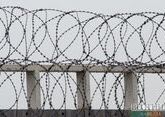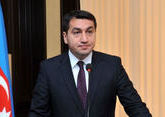Last week, a delegation of Azerbaijani journalists, including Baku-based correspondent of Vestnik Kavkaza Orkhan Yelchuyev, visited Armenia and the occupied territories of Azerbaijan. The visit took place within the framework of the exchange program organized by the OSCE - a delegation of Armenian reporters arrived in Baku on the same days. In this article, Orkhan Yelchuyev told about what he saw in Yerevan and Karabakh.
The Nagorno-Karabakh conflict has been unsolved for several decades. During this time, a new generation of citizens of both states who were born and lived all their lives in conflict has grown up. In this regard, there was an urgent need for resuming information contacts, and the parties, making great efforts, organized two meetings of journalists - the people who shape public opinion, affecting the perception and nature of the conflict between Armenia and Azerbaijan.
The format of the event was unique: a group of 3 journalists from each side had to first come to Tbilisi, and from there to Azerbaijan and Armenia. The program for Azerbaijani and Armenian reporters was rich with trips and events; The Armenian side had ensured that the guests had a pleasant experience.
Already at the Georgian border, after crossing the Sadakhlo checkpoint, it became clear that there was no need to worry about security, as it was provided around the clock by a large detachment of Armenian special services.
In Yerevan
The Pink City, as tourists call it because of the characteristic architectural style based on tuff, welcomed us with sunny weather. Yerevan is almost no different from other modern capitals of the former Soviet Union, with the exception of one drawback which is evident to both a knowledgeable person and anyone who carefully listens to guides' stories about the city's history. Guides usually say that Yerevan is 30 years older than Rome - but where are its ancient monuments? The capital of Armenia has no historical center, no ancient buildings, no fortresses, no medieval baths.
The history of the city can be observed from the photographs in the Blue Mosque, a unique building built during the Turkic Qajar dynasty's rule. The imam, Armenian Christian Vazgen calls himself the only Christian mullah in the world. There is a book center in the mosque where they teach Farsi, and about 200 people, mainly immigrants from Iran, gather for juma prayer here every Friday. The information stand says that founder of the mosque Huseyn Ali Khan was the governor of Yerevan - although in fact he was one of the rulers of the independent Erivan Khanate. When asked who the Qajar Turks were, Vazgen kept saying that they were Persians, and therefore the mosque should be considered Persian, not Turkic.
The lovely guide girl who showed us the city admitted that it's the first time she's seen Azerbaijanis in person. It became clear that this is the gap between peoples that has been formed with the change of generations: when people hear nothing good about each other, don’t communicate with each other personally, it’s difficult to find a common language, especially to solve the global political problem peacefully. In this regard, the visit was very useful, as it revealed many nuances which have not been covered or simply not noticed in recent years, considering the conflict and relations between the two peoples through the prism of stereotypes.
Hostile stereotypes are one of the main obstacles in the settlement of the Armenian-Azerbaijani conflict. Reconciliation, not to mention the possible settlement of the conflict, is hindered by the images of the 'adversary', rooted in the minds of those people with whom we spoke in Armenia. This is the result of the propaganda carried out by the Karabakh clan of the instigators of the conflict Robert Kocharian and Serzh Sargsyan and which was continued under PM Nikol Pashinyan - it still spreads hatred in society.
The dialogue with journalists and NGO representatives in Yerevan was constructive and informative. According to political analyst Richard Kirakosyan, whom we met during a tour of the cognac factory in Yerevan, we can’t talk about rational economic benefits in Armenia because of the high emotional approach to the conflict, as he said, by all its parties. "In other words, we have not yet reached that maturity to reason rationally. The benefits are not taken seriously and have lost their value," he stressed.
Some Armenian politicians and experts claim that the occupation of Karabakh is the result of a conflict of civilizations, but we could observe with our own eyes that it's nothing like that. Rather, there is an ethnopsychological model of conflict, when moral ties were broken between nations, trust and confidence in security, as well as key human needs of communication were lost. The problem of lack of trust between nations plays a key role in the failure of compromises.
In Karabakh
The main event of the trip, of course, was a visit to Karabakh. Just one day, but what an impression we had. Incredible feelings hit you already when the bus travels through the picturesque Lachin region occupied by Armenian troops. Looking at the Lachin mountain ridge, you see scenes of horrific hostilities, the capture of Azerbaijani lands, flashing before your eyes. The place is in desolation, only blackberry bushes grow along the road to Khankendi and Shushi, filling not only rare ruins, but the whole of Karabakh.
Although the villages, according to the stories of Armenian colleagues, are supplied with gas, and gas pipes can be seen along the roads, the houses are heated with wood, which could be seen from the smoke coming out of the chimneys. By the way, this is typical not only for Karabakh, but also for Armenian villages.
During all the years of occupation, the population of Karabakh lives at a suspended but incomplete war. It is important that we saw a desire to end the war not so much in Armenia, where they spoke little about it, but among the residents of Karabakh. It’s clear why: they live closer to the front line. A lot of troops on the streets of Khankendi constantly reminded that the war is very close.
The meeting with Armenian journalists and NGO representatives living in Karabakh was even more constructive and informative than in Yerevan. We saw that the Armenian community of Karabakh has great hopes for the negotiation process - many of them admitted that they really want peace. We also noticed a high degree of nostalgia for the past. The fact that almost all Karabakh people are fluent in Azerbaijani language was striking - evidence of the preservation of ties and their great mental similarity with the rest of the Azerbaijani population. And this is the basis for a real dialogue.
Building a dialogue between the Armenian and Azerbaijani communities of Karabakh is vital. "There is a belief that this initiative will serve as the beginning for human dialogue between people. Until there is dialogue, there will be no trust, and if there is no trust, any political decisions will be explosive," one of the journalists living in Karabakh said.
The desire for peace and tranquility in the region was the main leitmotif of our meeting with the Armenian community of Karabakh. The fact that the Armenian community of Karabakh has become a hostage to the war was visible, some couldn't suppress their feelings during the conversation, which can be explained by fatigue from the conflict.
Alas, Armenia's policy isolate the occupied Nagorno-Karabakh from civilization, putting it in eternal socio-economic decline. The roads of Karabakh are empty. If it wasn't for the occupation, controlled by the Armenian authorities, one could see that the communities are able to live in peace and harmony, as before.
We believe that the Armenian and Azerbaijani communities of the Nagorno-Karabakh region of Azerbaijan will once again be able to coexist peacefully within the internationally recognized borders of Azerbaijan. Both peoples lived side by side for centuries, with a lot of ties formed between them, there was a cultural exchange for a long time, multi-ethnic families were started. The Armenian community of Karabakh is also part of the Azerbaijani people, which has the same rights as all citizens of Azerbaijan.
The Azerbaijani community of Nagorno-Karabakh is ready for a constructive dialogue with the Armenian community. Interethnic hatred, the reality of which is imposed by the so-called experts, does not exist. Azerbaijani people, including members of both communities of Nagorno-Karabakh, as well as the Armenian people, want peace.
The isolation of Armenia, which keeps Nagorno-Karabakh in the blockade with it, is a dangerous phenomenon for the entire region, it results in the destruction of interethnic relations. One manifestation of this is claims that the Azerbaijani community of Nagorno-Karabakh does not exist, while now its number has exceeded 80 thousand people. To combat this, it is very important to intensify the efforts of both communities of Karabakh, which are so close to each other in spirit and mentality.
I should add that we visited the occupied territories of our state not only as journalists, but, first of all, as citizens of the Republic of Azerbaijan. From Yerevan we traveled back to Azerbaijan, to our native lands, recognized as Azerbaijani by all international documents and laws.
In this regard, the statement of persons calling themselves diplomats of the unrecognized 'NKR' regime, whose work is aimed at promoting the idea that the captured Karabakh and the territories surrounding it are not Azerbaijani, was regrettable. They said that a 'NKR' journalist arrived in Baku as part of a delegation of Armenian journalists, although in fact this colleague of ours is a representative of the Armenian community of Karabakh. And considering that the meeting with him was also attended by the representative of the Azerbaijani community of Karabakh, we can assume that the first dialogue between the communities was held in Baku these days.
We emphasize that Azerbaijan is an example of multiculturalism and tolerance, about 60 nationalities belonging to different religions live in peace and harmony on the territory of the republic. The Armenians of Azerbaijan will be the same full-fledged part of our civil society, like the others.
In the 21st century, when the processes of global economic, political, cultural and religious integration are taking place in the world, the battle front with trenches where the troops are face to face with death for days is a tragedy of a universal scale. Hatred cannot go on for centuries. In order to end the war, achieve peace, restore confidence between peoples and return to normal life, much more needs to be done. Journalists can play a key role in establishing trusting relations between the people of Armenia and Azerbaijan.










